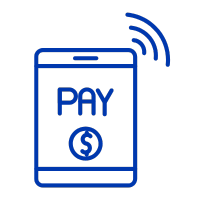Intake-to-Pay (I2P) is a process framework within procurement that integrates the initial request intake stage with the entire payment cycle, ensuring a seamless flow of procurement activities. It focuses on streamlining and automating processes from the initial procurement request or requisition to the final payment, enabling organizations to enhance efficiency, compliance, and control over spending.
Key Benefits
– Streamlined Procurement Processes: Intake-to-Pay (I2P) automates and integrates procurement activities from initial request to payment, reducing manual tasks, and accelerating procurement cycle times.
– Enhanced Compliance and Control: I2P ensures adherence to company policies and regulatory requirements by embedding compliance checks throughout the procurement process.
– Improved Visibility and Reporting: Centralized data collection and real-time analytics provide insights into procurement activities, enabling better decision-making and strategic planning.
– Cost Reduction and Savings: By automating procurement processes and improving negotiation capabilities, I2P helps in reducing procurement costs and identifies opportunities for savings.
– Increased Efficiency and Productivity: I2P reduces the time and effort required for procurement tasks, allowing teams to focus on more strategic activities and significantly increasing overall productivity.
Related Terms
– Streamlined Procurement Processes: Intake-to-Pay (I2P) automates and integrates procurement activities from initial request to payment, reducing manual tasks, and accelerating procurement cycle times.
– Enhanced Compliance and Control: I2P ensures adherence to company policies and regulatory requirements by embedding compliance checks throughout the procurement process.
– Improved Visibility and Reporting: Centralized data collection and real-time analytics provide insights into procurement activities, enabling better decision-making and strategic planning.
– Cost Reduction and Savings: By automating procurement processes and improving negotiation capabilities, I2P helps in reducing procurement costs and identifies opportunities for savings.
– Increased Efficiency and Productivity: I2P reduces the time and effort required for procurement tasks, allowing teams to focus on more strategic activities and significantly increasing overall productivity.
References
For further insights into these processes, explore Zycus’ dedicated resources related to Intake-to-Pay (I2P):
- The Advantages of being a Best-in-Class Procurement Department
- Fine Tuning the Procurement Symphony with Source-to-Pay Automation – Part 1; Smart Data, Visibility and more..
- Enhancing the Contracting Process with a Touch of Technology – Part 3
- The Key to Relationship success in procurement
- Calculating the Return on Digital Procurement: A Strategic Approach
White Papers
Master the UK Procurement Act 2023: Ensure Compliance & Drive Procurement Excellence

Filter by
Compliant Invoicing
Compliant Invoicing refers to the process of generating, submitting, and managing invoices in adherence with legal, regulatory, and contractual requirements.
Continuity Plan
A Continuity Plan is an organized set of policies and procedures designed to ensure that a company’s essential operations can
Cost Modeling
Cost Modeling in procurement refers to the analysis and estimation of the total cost of ownership of a product or
Contract Audit
Contract Audit is a systematic evaluation of agreements and related documentation to ensure compliance with contractual terms, identify discrepancies, and
Procurement Cycle
The Procurement Cycle refers to the end-to-end process through which an organization identifies its needs, sources suppliers, negotiates contracts, places
Procurement Master Data Management
Procurement Master Data Management is the disciplined approach to managing core, consistent procurement information, including supplier, product, and contract data,






















































